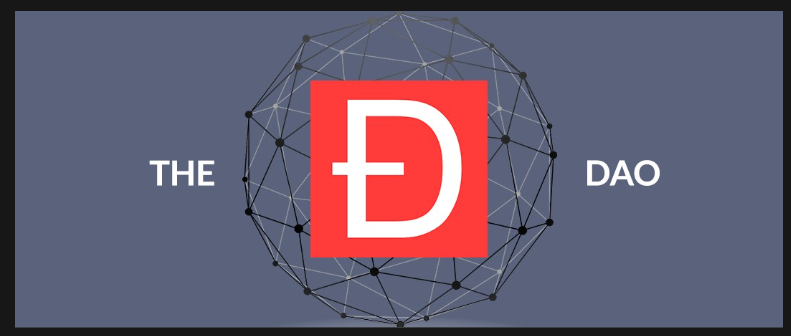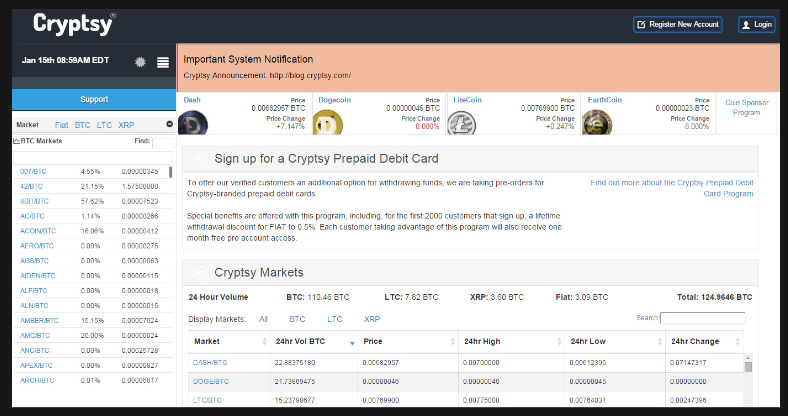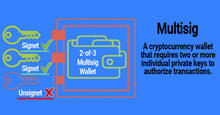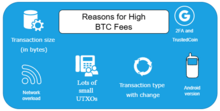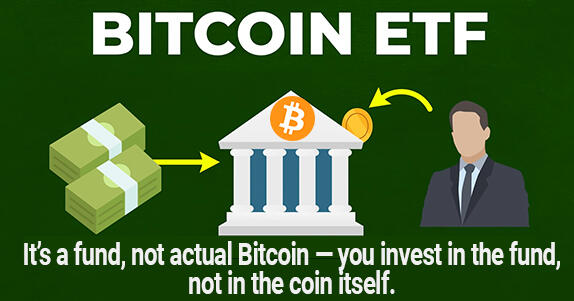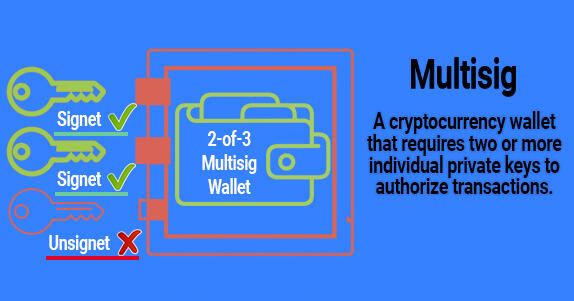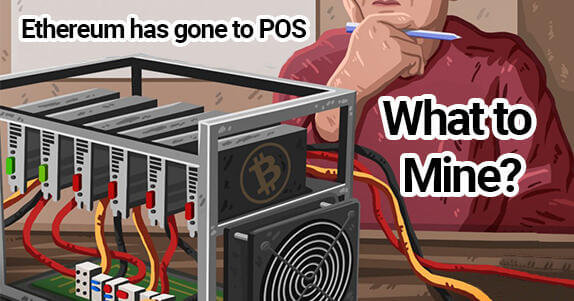What is a SCAM in cryptocurrency and how to identify fraudulent projects? Examples of a crypto scam

The word "SCAM" has become widespread in investment circles. It is usually associated with a lot of concerns about the return on investment and the prospects of projects.
What is a scam and who are scammers?
The term "SCAM" is firmly entrenched, mainly for Internet investment projects, which are most often created with the aim of deceiving gullible investors - and do not carry a useful mission.
Thus, a SCAM is an investment project that for some reason or intentionally stopped fulfilling promises made to depositors — stole investors' money.
Cryptocurrency investors use the word "scam", most often, in relation to ICO projects that do not carry a useful idea, but are open exclusively to raise money under loud promises with the help of tokensale.
Who is a scammer, you can understand from the general interpretation of the word. Scammers who create scam projects are called scammers, and the moment when the project ceases to pay dividends or simply disappears along with investors' deposits is marked by the phrases "the scam has come."
Types of project benches. Reasons for the scam
All scam projects can be divided into two types:
- startups that do not have any real project behind them (HYIPs);
- projects that for some time faithfully fulfilled their obligations to investors, but then for some reason abruptly closed without returning the money.
In the first case, the project is hastily closed at the initiative of the administrator, when the maximum profit is collected. It should be noted that any HYIP project that was originally designed to conduct a scam will certainly end with a scam.
Such "projects" are divided into three categories.
| Scam categories | Signs |
| Short-term scam | After attracting a stream of investors with the help of active advertising, the project is immediately closed. Often such projects promise high profits and exist for no more than a week or a month. |
| Medium-term scam | The project is gradually gaining momentum and even pays dividends for some time due to the investments of other participants, and when the flow of new investors decreases, it closes. Medium-term scam projects can exist for several months (sometimes a year) and have an average yield. |
| Long-term scam projects | Initially, they pay regular profits to investors, and when new inflows of investments are unable to cover the costs, they are closed. It can work for a couple of years. |
Most of the projects that have been fulfilling their obligations to investors for some time are closed at the moment when the administration noticed that the inflow of money from the project is decreasing or the possibility of development ceases to exist. The reasons for scams can be:
- Creating a project in order to raise money, do nothing and immediately close;
- Creating a project that will live its own life. Most often the advertising of such projects looks promising, but in fact the main goal of the project is to raise money and the lack of development of the project!
- Significant changes in the global economy, crises or unstable stages in which the inflow of investments significantly decreases;
- Hacker attacks in which all invested funds are transferred to hackers;
- Conflicts between the founders of the project;
- Panic among investors, in which they merge the acquired assets;
- The lack of demand for the project from the end user;
- Inability to compete in the market;
- The oversaturation of the project and the insufficient amount of funds collected to start.
It should be noted that projects are not always skimmed because of the wishes of the organizer. There may be scams for external reasons that the project administration cannot influence.
Such a deceptive maneuver is motivated by the desire to get at least a partial profit. In practice, there were even several scams where the administration honestly voiced the reasons for the closure of projects and paid debts to investors.
The main signs of a scam in cryptocurrency
Projects that were originally conceived as a scam usually have a set of certain features:
- Exorbitantly high return on investment;
- Annoying ads;
- special benefits of profitability for investors who have invested larger amounts of money;
- The project site is usually not well developed, may contain non-original materials and images;
- Absence or insufficient elaboration of the project idea;
- Lack of a development team;
- Poor technical support of the project, lack of technical support and insufficient elaboration of the Internet resource.
The first sign of a scam of existing projects is the termination of payments under the project program.
At the same time, the administration can cover up its actions with various excuses, hoping to grab some more money. For example:
- New conditions for disbursement of funds, increase of the minimum withdrawal amount, introduction of mandatory user verification;
- Selective payments;
- Technical problems with withdrawal of funds;
- Transition of the project to a new method of work;
- A fictional hacker attack.
The termination of payments and the presence of excuses signals that the scam of the project has already begun, and investors should take appropriate measures.
The official website of the project may also abruptly cease to exist or work exclusively for the deposit of funds.
The loudest scams in cryptocurrency
The scam on the Internet is mainly represented in financial pyramids that present themselves under the guise of investment funds, startups and cryptocurrency projects. The digital currency market is one of the most fraud–prone areas.
Of all the projects that go to the ICO every year, only 10% survive to full implementation, the rest are skimmed at various stages. So the project token may never rise to the stated heights due to the unrealization of the project or stop trading altogether.
Plexcoin
One of the loudest scams of the cryptocurrency market can be called the closure of the Plexcoin project on November 30, 2017.
During the ICO, the creator of the cryptocurrency Dominique Lacroix managed to attract more than $ 15 million to develop an improved transaction system, which was supposed to compete seriously with Bitcoin, since it would have an average speed of operations in the system of 30 seconds, instead of the 40 minutes characteristic of Bitcoin.
After the closure of the project, Dominic was awarded two months in prison and a fine of $ 10,000, which, of course, more than covered the organizer's income.
The DAO
The unintended scam was the closure of The DAO project. An error in the source code of the cryptocurrency led to the fact that the scammers easily managed to steal more than $ 60 million from the system, after which the project was forced to hastily close.
CoinDash
The CoinDash coin ICO was marked by a scandal when it became known that the fundraising wallet did not belong to the creators of the project. Hackers hacked the project's platform and entered their wallet address, which led to the fact that more than 7 million investment funds raised at the ICO ended up in the hands of scammers.
Mt.Gox Exchange
In turn, it should be noted that not only cryptocurrencies can skim. So, the large cryptocurrency exchange Mt.Gox ceased to exist, and with it 850 thousand Bitcoins sank into oblivion.
According to the data announced by the administration, the exchange became a victim of a hacker attack, after which it was forced to declare itself bankrupt and close, but it has not been reliably proven that this was not the trick of the organizers exclusively.
Cryptsy Exchange
Another striking example is the closure of the Cryptsy exchange, the creator of which disappeared along with at least $ 5 million.
Previously, after users began to notice delays in payments, the administration admitted that it had become victims of hackers who managed to steal 130 thousand Bitcoins and 300 thousand Litecoins from the exchange's accounts.
But the exchange continued to exist in the hope of compensating losses by the commission, and subsequently the creator himself disappeared from view, and with him the funds of the exchange's clients.
Rules of conduct at the scam crypto
When the first signs of a scam are detected, the main thing for an investor is to withdraw his assets. If it is impossible to withdraw from the project platform or exchange tokens in the traditional way, non-standard methods should be tried. You can try to bypass the scam on the exchange with the help of third-party exchange resources. When scamming cryptocurrency exchanges, it is recommended to also try the possibility of withdrawing funds in each cryptocurrency presented on the platform.
Often payments are not blocked immediately to all participants. Check the possibility of withdrawal regularly. If there is a possibility of internal transfers on the platform, then it would not be superfluous to create a new account and attempt to withdraw funds through it.
It also happens that only small amounts are withdrawn. It would not be superfluous to try to withdraw funds in parts.
Do not give in to panic and do not increase it. Perhaps, even at the first signs of a scam, the project will last for some time and even partially resume payments, but such behavior of investors will lead to an early merger. If you want to warn new investors about the danger of investing in a project, then you should do it in personal messages.
You should also write to the technical support of the project and inform them that you cannot withdraw funds. Perhaps you should indicate that you are a popular blogger or introduce a resource monitoring site, and you will have to inform your audience that the project has been missed.
What should not be done in any case?
In no case should you fan the panic on forums and chat rooms. Such actions lead to a reduction in the life of any project and, accordingly, the inability to recapture the funds received.
Also, campaigning in support of the project should not be carried out. A small influx of new investments is unlikely to be able to save the project, which has already begun the path to closure, but will lead to additional losses among new investors.
It should not be assumed that everything will work out and the delay in payments is only a temporary difficulty. Yes, this is, of course, possible – and otherwise you will be able to return to the project again. But if a miracle does not happen, you will lose all funds.
Often, the administration of the scam uses additional tricks to attract the latest flow of investment. These can be various fictitious actions for the deposit of funds, an application for the restart of the project, and so on. In no case should one be led to provocations and invest additional funds, if there is uncertainty about the further work of the project and closed withdrawal of funds.
How to protect yourself from a scam in cryptocurrency?
Before investing in cryptocurrency, you should carefully study the whole background of the project:
- evaluate the relevance and reality of the idea;
- get acquainted with the founders of the project – it's really bad if their identities are not known;
- pay attention to the biography and education of the creators;
- track down previous developer projects;
- study the proposed development strategies;
- too high a projected percentage of profitability should alert;
- evaluate the reliability of the technical component of the project;
- study the news and opinions of experts on the project;
- read reviews of previous developer projects, if any;
- check the operability of the project's hotline and the professionalism of the responses.
We should also not forget about risk diversification. It is not worth investing all the investment capital in one project, and in high-risk investment projects, such as ICO, it is never worth investing more than you are willing to lose without significant changes in your financial condition.
Conclusions
The risks of a scam exist in all investment options, but the cryptocurrency sphere is most susceptible to them, since in most countries it is not regulated at the legislative level. As a rule, the upcoming scam is immediately noticeable and manifests itself in changes in the closure of the withdrawal of funds from the project.
If a scam is detected, the first thing to do is to try to withdraw your funds by all available means, try to exchange tokens on third-party resources and in no case give in to panic.

